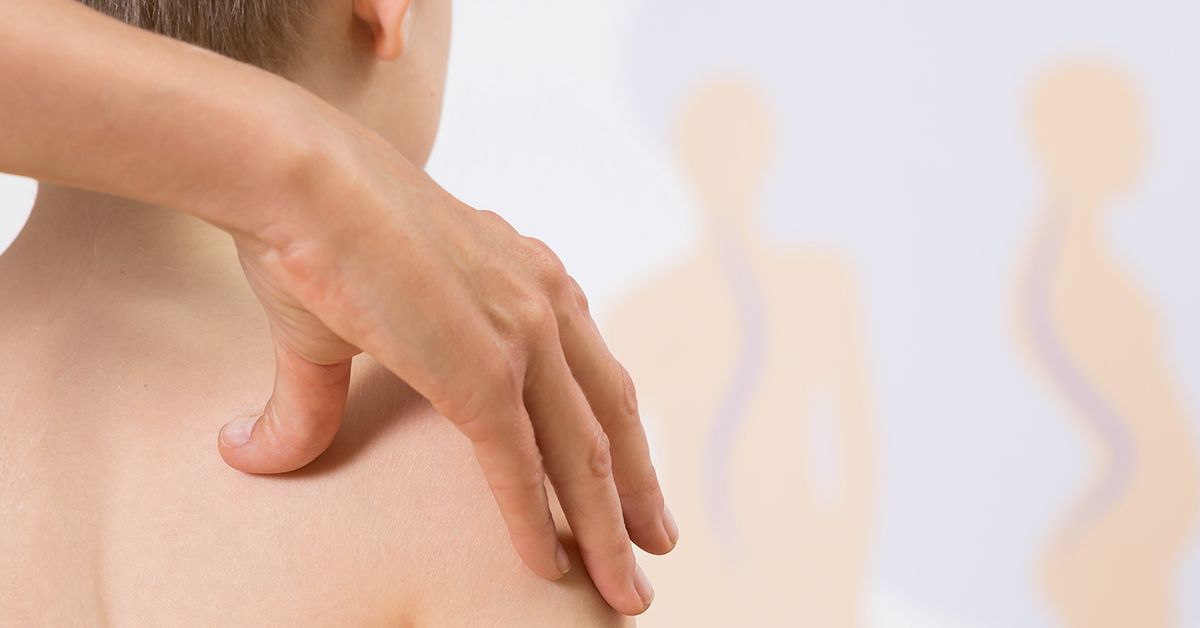
Condition and Causes
Scoliosis occurs when the spine curves abnormally in one or more place. These curves may affect balance and alignment in the body, and they can limit a person's ability to move normally.
Two percent of people are affected by this deformation of the spine,which frequently develops before puberty. It can be hereditary, or it can occur due to one of several causes:
Secondary:
Developed as a reaction to other spinal conditions that change spinal alignment and balance, like degenerative disc disease or osteoporosis. Degenerative adult scoliosis is the term used to describe scoliosis that develops from spinal degeneration.Congenital:
Existing from birth.Myopathic:
The muscles around the spine do not work properly due to muscular or neuromuscular disease, like cerebral palsy or muscular dystrophy.Ideopathic:
Arising spontaneously, or from an obscure or unknown causeParalytic:
The vertebrae in the spine may become unbalanced when the muscles around the spine no longer work due to spinal cord injuryAdolescent Ideopathic Scoliosis (AIS) accounts for approximately 80% of idiopathic scoliosis cases, making it the most common form of the condition. AIS develops around the beginning of puberty.
Symptoms and Diagnosis
When scoliosis is present, several signs occur. These include uneven shoulders, shoulder blade protrusion, uneven waist or elevated hip.
The Adam's Forward Bend Test is used by pediatricians as a standard screening for scoliosis. This test requires the patient to lean forward and, keeping his or her feet together, bend 90 degrees at the waist. From this angle, the person performing the exam can view any spinal curvature or abnormal asymmetry of the trunk.
A diagnosis can be confirmed using diagnostic tools including X-rays, Computed Tomography (CT) and Magnetic Resonance Imaging (MRI). The Cobb Method can be used to measure the extent a curve has progressed. This method categorizes in terms of degrees. A curve is viewed as significant if it is greater than 25 to 30 degrees. Forty-five to 50 degree curves are viewed as severe and usually require more aggressive treatment.
Treatment
Observation is needed to ensure the curve doesn't worsen. If it does, bracing may be necessary. There are several different kinds of braces, and your doctor will help you to find the right one. Different braces used to treat adolescent scoliosis include:
Boston Brace:
the most often prescribed brace, it often covers from under the shoulder blades to the tail bone in the back, and from below the breast to the start of the pelvic area in front. This brace is also often called the low-profile or underarm brace.Milwaukee Brace:
This brace includes a plastic pelvic girdle that has been specially contoured to the patient's curvature, as well as a neck ring connected by metal bars in the back and front of the brace. This brace covers from the neck to the pelvis.Charleston Bending Brace:
This brace is designed to over-correct the curve while being worn at night. It achieves this by being molded in a fashion that causes the patient to bend towards the outward bulge of the spinal curve.Providence Brace:
This brace is designed specifically for the patient through use of a computer. It is worn only at night, and is designed to over-correct in a manner similar to the Charleston Bending Brace.Wilmington Brace:
This brace is a total-contact orthosis designed as a sort of jacket, with adjustable straps and a front closure. It is usually made of a lightweight plastic material, and covers from the thoracic area of the spine to the sacrum.Unless the condition is severe or life-threatening, surgical treatment is not a viable option until after growth plates have finished joining. If surgery is performed before a patient is finished growing, continued revisional surgery would be necessary as screws and equipment would shift, which can be painful and counter-productive.
Your doctor may consider spinal surgery if the condition hasn't responded to any other, more conservative treatment, or if your curve advances to more than 40-50 degrees. Other considerations for spinal surgery to treat scoliosis include progressive neurological changes including weakness, tingling or numbness, or if the deformity has become unbearable for physical or aesthetic reasons.
Risks and Benefits
Surgical treatment of scoliosis usually aims to
- Remove pressure from the spinal cord and nerves
- Reduce the curve as much as possible
- Stop the curve from progressing
- Protect the nerves and spinal cord from further damage
Failure to take preventive measures for any spinal condition may result in a further aggravated condition. Surgical measures for advanced cases may give relief from extremity pain. The risks involved with surgery are common - infection, blood loss, damage to nerves and spine - and some specific to your treatment. This material is intended to give the patient an overview of surgical procedures and treatments and is not intended to replace the advice and guidance of a physician. Always consult with your doctor about the particular risks and benefits of your treatment.
